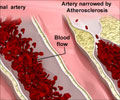Sustained, community-wide programs targeting CVD risk factors and behavior changes were associated with reductions in hospitalization and death rates over a 40 year period in a rural Maine county.

For the current analysis, residents of Franklin County (population, 22,444 in 1970) were included, and the preceding decade was used as a baseline to compare Franklin County with other Maine counties and state averages.
In its first 4 years, FCHP was able to screen about 50 percent county adults. Significant movement from detection to treatment and blood pressure control was seen in individuals with hypertension. The proportion in control increased from 18.3 percent to 43.0 percent from 1975 to 1978, an absolute increase of 24.7 percent. After having introduced cholesterol screening in 1986, FCHP reached 40 percent of county adults within 5 years, half of whom had elevated cholesterols. Over the following decades, cholesterol control had an absolute increase of 28.5 percent, from 0.4 percent to 28.9 percent, from 1986 to 2010. Similarly, on initiation of multiple community smoking cessation projects, community-wide smoking quit rates improved significantly, from 48.5 percent to 69.5 percent, and became significantly higher than that for the rest of Maine.
The hospitalizations per capita in Franklin County were less than expected between 1994 and 2006. This lower overall hospitalization rates was associated with $5,450,362 reductions in total in- and out-of-area hospital charges for Franklin County residents per year. The mortality rates also declined.
The authors wrote, "The experience in Franklin County suggests that community health improvement programs may be both feasible and effective. This may be especially true in socio-economically disadvantaged communities where the needs are the greatest, as the increasing association of lower household income with higher mortality in Maine suggests. Further studies are needed to assess the generalizability of such programs to other U.S. county populations, especially rural ones, and to other parts of the world."
The study is published in JAMA.
Advertisement












